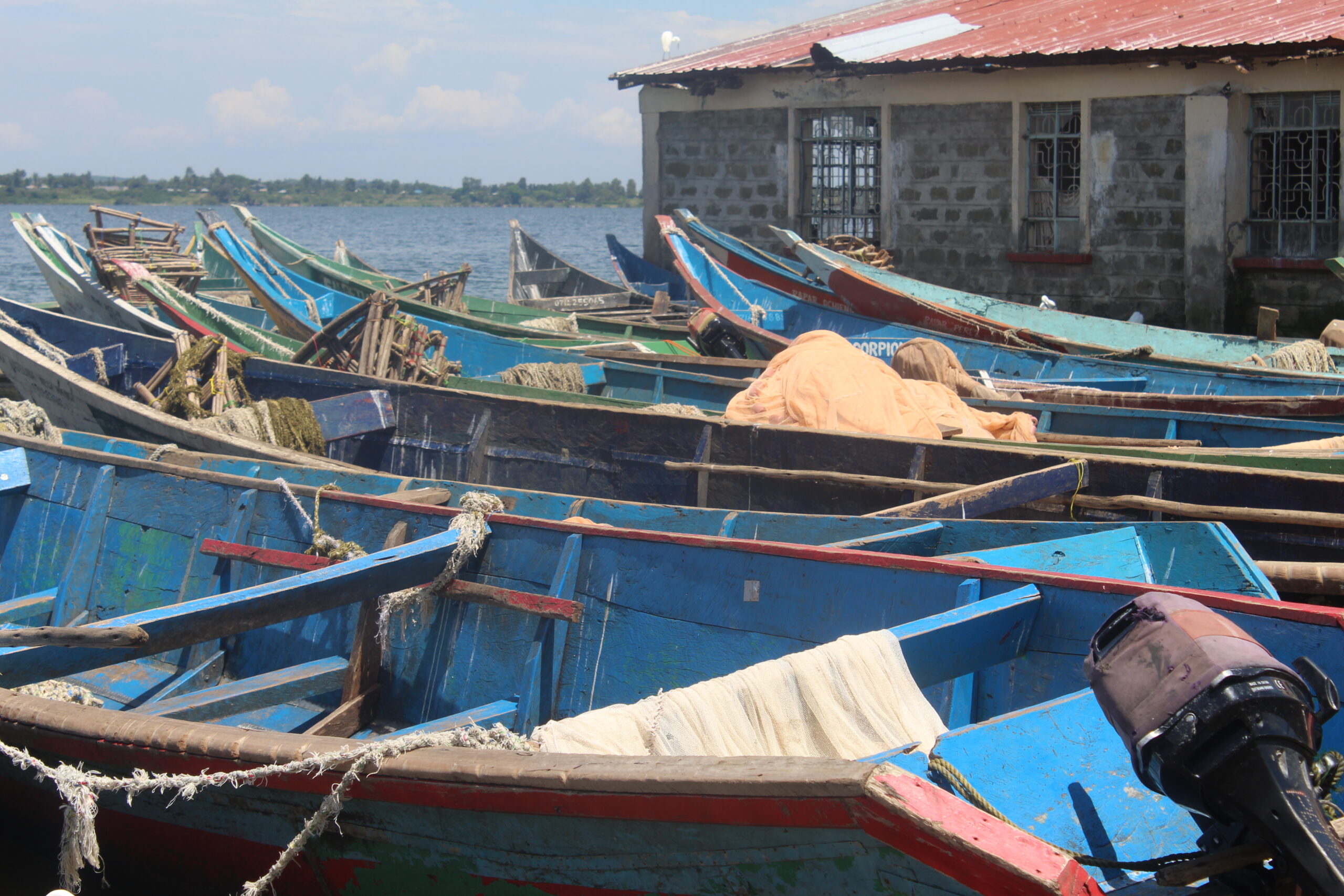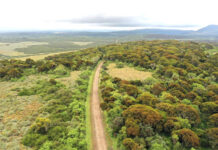By Sharon Atieno and Mary Mwendwa
Siaya County, Kenya: It is late afternoon in Kenya’s Siaya County. The weather is sunny and the atmosphere is humid. Despite this, there is a beehive of activities happening along Usenge beach in Bondo sub-County.
Few boats are resting on the beach while some passengers are arranging their luggage to board boats and cross to the islands. This includes islands that are as far as Uganda, a neighboring Country.
Large carpets of Rastrineobola argentea(sardines) commonly referred to in the local language as Omena are neatly displayed near the beach with women busy using wooden brooms to spread and dry them ready for market. Omena is one of the dominant fish species in this area.
At the beachfront lies Usenge Beach Management Unit (BMU) which borders the Fisheries Office to its right. Next to the offices are huge coolers where brokers are weighing giant Nile perch and tilapia species ready for markets like Nairobi, while other young men are dicing the Nile perch species for fish maws commonly used as sewing threads in theaters.
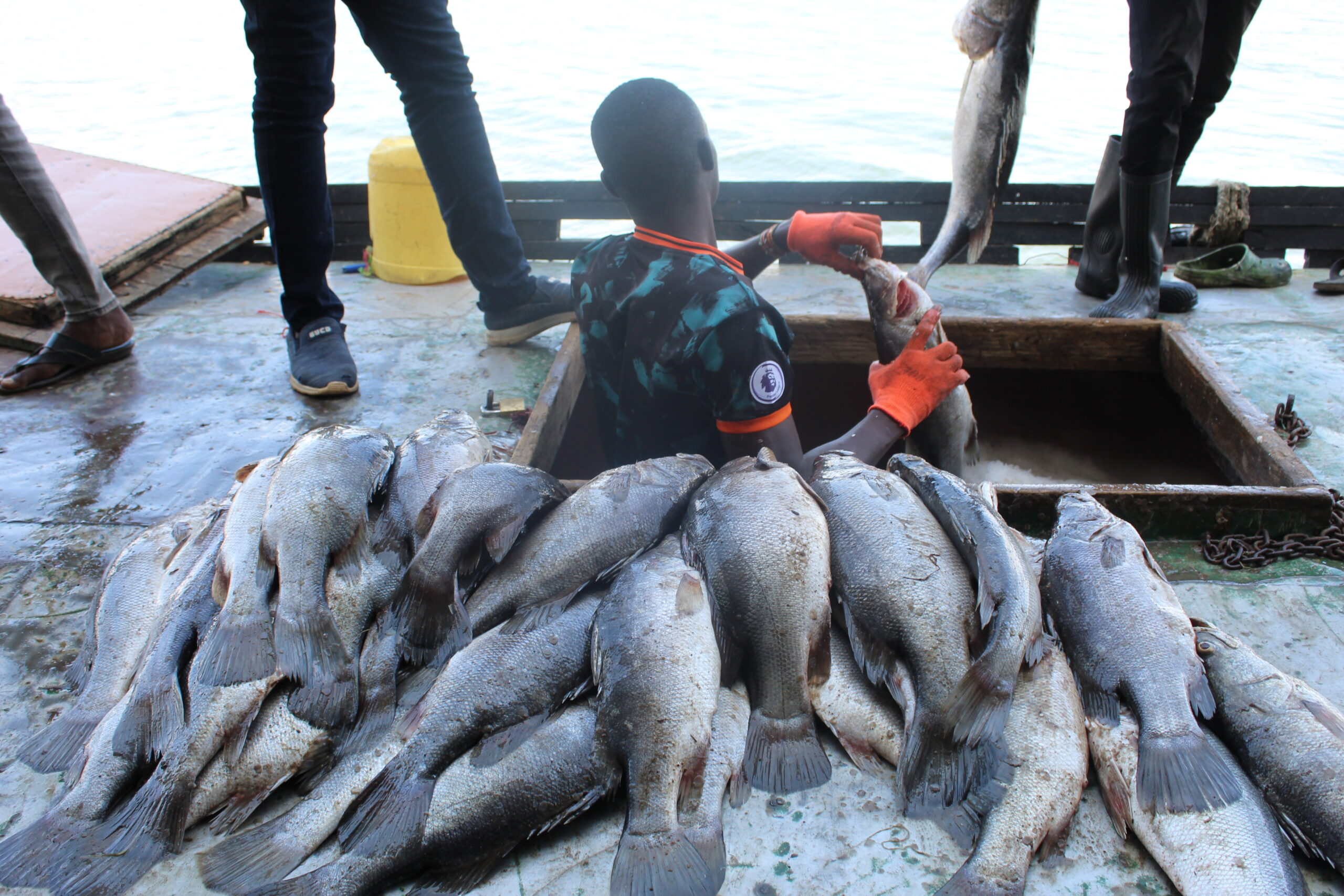
Usenge beach is among the 21 beaches under West and East Yimbo wards managed by Maurice Oyola, In-charge fisheries in the two wards.
Though fishing is among the main economic activities in the area, Oyola admits that the use of illegal fishing methods and gear is still a challenge. He notes that these involve the use of beach seine, boat seine, monofilament nets, gillnets less than five inches mesh size, drift nets, and fishing in prohibited areas such as breeding zones among others.
Before I lose you let’s define these terms, Webster describes monofilament as a single strand of untwisted synthetic fiber, especially nylon, used especially for fishing line and beach seine are long net that is made fast to the shore at one end and then circled about a school of fish and drawn ashore.
According to Maurice, the use of monofilament nets is widespread illegality in the area as in a month they can confiscate up to 2,000 pieces of these nets. Oyola confides that fishermen prefer them because they are cheaper compared to the standard required nets. This is despite the nets entering the country through porous borders as they are not locally made.
“This net is very dangerous, as it is made of plastic and does not decompose and also catches very young fish. It is not sustainable nor environmentally friendly,” he reveals,
Adding that “These nets even when they tear away from the main net continue to do what is called “ghost fishing” years later” says Maurice.
With regards to the illegal fishing methods, Oyola says in a month, they can catch an average of five fishermen in the act. The number could be high, but often on seeing them, they take to their heels leaving their gears behind.
The gears are often confiscated and destroyed through a court order while the fishermen are arrested and fined after being presented before a court.
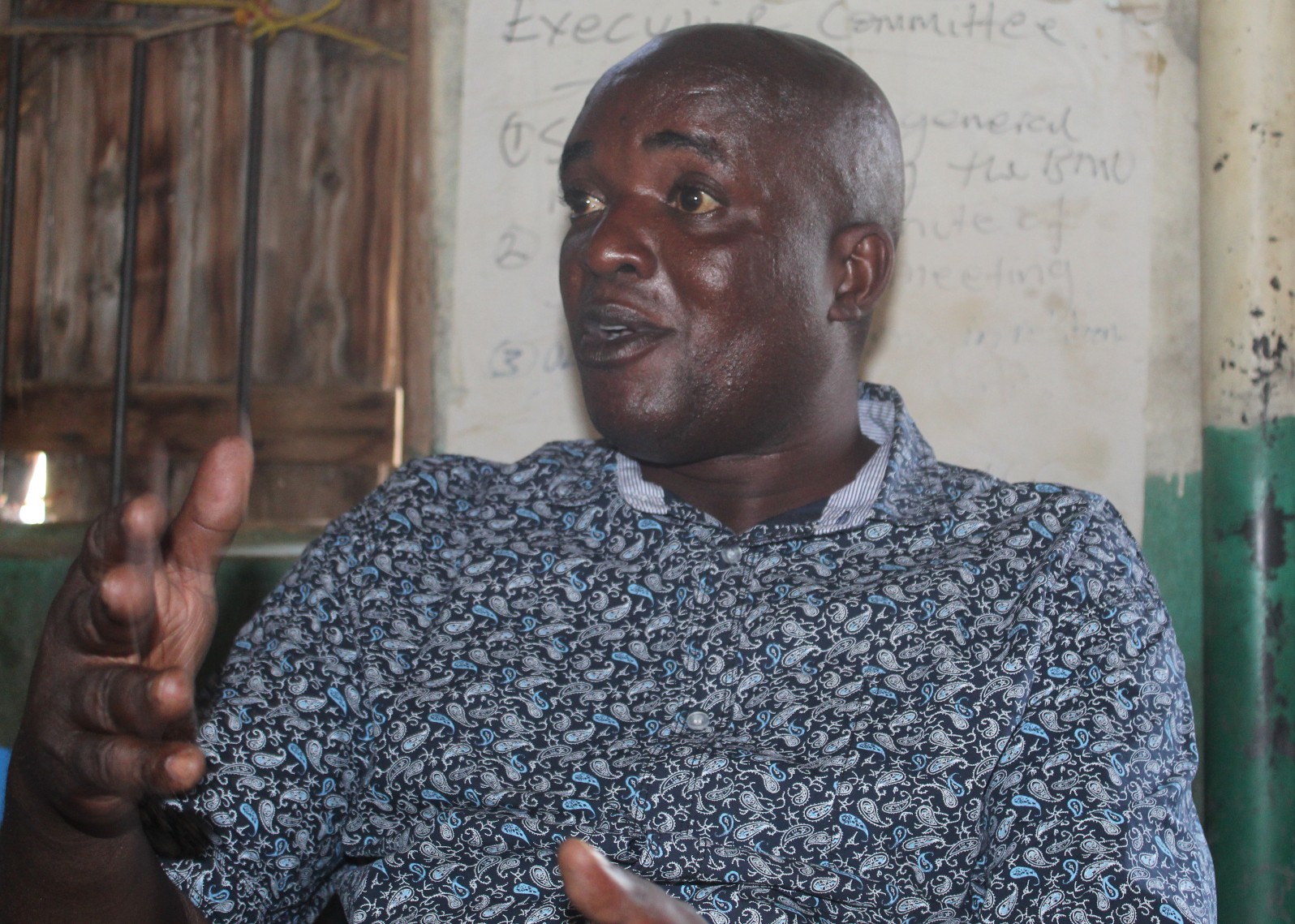
Joseph Omondi, Secretary General Usenge BMU confirms that illegal fishing nets such as monofilament and undersized nets are an issue among fishermen at the beach. He notes that despite fishermen being charged and the nets confiscated, they still buy them again.
A monofilament net, he says can cost up to Kshs.1300 (about USD 13) per piece yet a fisherman only needs at least 10 pieces while a recommended net costs around Kshs. 4,000 (about USD 40) per bunch yet a fisherman requires seven bunches for example, in the case of catching Omena.
Besides being cheap, Omondi adds “The monofilament catches a lot of fish (different sizes) at once. When it is in the water, the fish cannot see it easily and get themselves trapped in the net.”
He also notes that poisoning fish used to be a common phenomenon a few years ago. The method was used by scrupulous fishermen who wanted to get quick money. The poison once poured on the lake would deny the fish oxygen in the water and as a result, the fish would die and then float on the water’s surface. But such cases are no longer there, Omondi says.
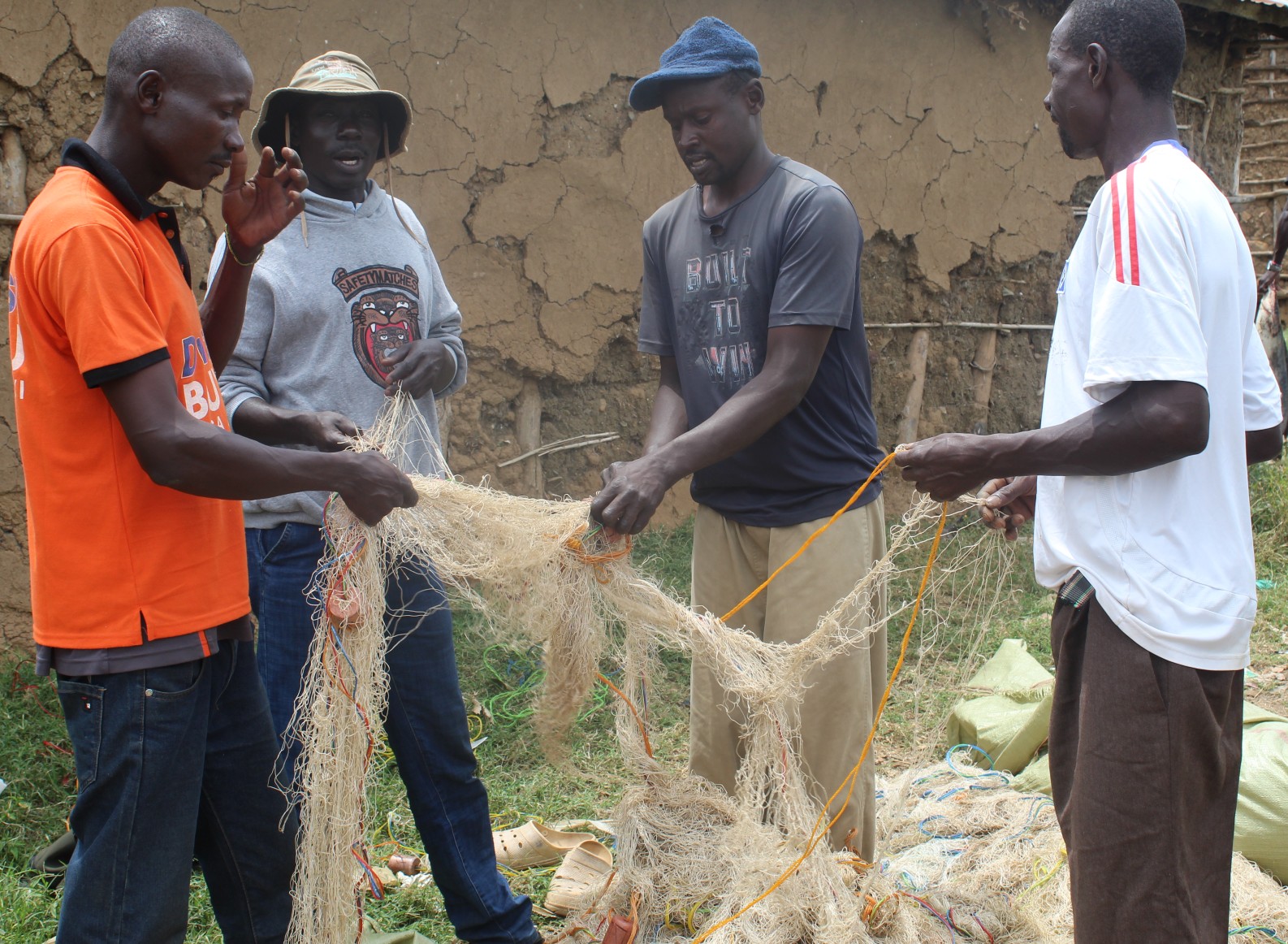
A few kilometers from Usenge beach lies Mageta island, a boat ride to the island takes roughly 45 minutes. The island is home to about seven beaches. We visited Mahanga beach, which lies near the Ugandan border. Here, fishermen operate both in Kenyan and Ugandan waters.
Jairus Iganga, the chairperson of Mahanga BMU, is in charge of at least 600 fishermen. Here the kind of illegalities slightly differs as they also have to adhere to Ugandan rules of fishing. He is quick to fault the government for not helping them to solve cross-border related fishing conflicts with Ugandan Authorities.
“This beach is closest to Ugandan waters. Uganda has very strict and unfair regulations that make our fishermen prone to frequent arrests,” he says.
“For example, a specialized boat plate which is like a license for a Kenyan in Uganda can cost up to Kshs. 2 million (about USD 20,000) while a Ugandan will pay Kshs. 30,000 (about USD 300) for the same. We share this water because we closely border each other. Another issue is the use of solar lamps for harvesting omena which are allowed in Kenya but banned in Uganda.”
This is a contradiction; he says, noting that the Kenyan government says the anchor lamps (preferred in Uganda) would lead to oil leakages into the water which results in the death of fish while the Ugandan government says the light of the solar lamps reflects deep into the water thus affecting even the breeding of fish.
Despite this, Iganga notes that on a daily basis, they cannot lack a case concerning the use of illegal fishing methods, however, the fishermen do these illegal activities in hiding hence it is not very easy to catch them.

One of the key observations made by the 2018 Catch Assessment Survey Report in Lake Victoria is that the use of the illegal fishing gear is still rampant in Lake Victoria (beach seine, boat seines ‘amouk’, undersized gillnets, monofilament).
The Kenya Marine and Fisheries Research Institute (KMFRI) report further notes that gears are increasingly being modified to enhance their efficiency (increased vertical/small seines panels, use of longline small hooks less than 10, increased vertical gillnet/small seine panels, increased number of longline hooks size less than 10, and reduced gillnet mesh sizes. Usage of gillnet with smaller mesh size is very prevalent especially within the Nyanza Gulf (mean hook size during this survey was 11).
Previous reports such as the National frame survey (2006) indicate a similar trend of illegality use. The 2006 survey found that out of a total of 217,358 gillnets recorded in the eight districts of Lake Victoria, the illegal ones were 30,876 representing 14.4% of the total gillnets, whilst recording a total of 553 beach seines.
However, this is not just a Kenyan problem but a transboundary challenge affecting the entire East Africa region.
In 2022, a local Ugandan daily reported the conviction of 40 Kenyan fishermen, 12 Rwandans, and 6 Ugandans who were found with illegalities including using prohibited fishing nets such as mosquito nets in the Ugandan part of Lake Victoria.
According to the Fisheries Management Plan III for Lake Victoria Fisheries (2016-2020) by the Lake Victoria Fisheries Organization (LVFO) Secretariat, one of the biggest challenges to the fisheries of the lake is illegal, unreported, and unregulated fishing (IUU) which comprises the use of illegal gears.
The Regional frame survey (2014) showed that between 2012 and 2014 nearly all the illegal gear increased: beach/boat seines increased by 30.3%; monofilament by 28.5%; cast nets by 6.5%, and traps/baskets by 16.4%. These gears affect mainly the juveniles and brooders because they are operated in breeding/nursery grounds.
The KMFRI 2018 report cautions that with rampant use of illegal gear, the fishery in the lake is under threat of collapse, with an eminent reduction in catches and thus, pending loss of livelihoods to the fish-dependent Lake Victoria Basin communities.
According to Dr. Kevin Obiero, Research Scientist and Centre Director, KMFRI Sangoro Station, illegal fishing entail using government-outlawed fishing gears and methods whose potential outcome is unsustainable fishing.
He says: “Illegal fishing gears impacts Lake fisheries at two levels through unsustainable fisheries and resource degradation.”
“For instance, beach seine traps both the big and juvenile fish. The big ones are reduced from the fish assemblage preventing new recruitment into the fisheries while the young ones are not able to mature. The bigger fish are also captured as they come on the shoreline to breed” he says.
Additionally, Dr. Obiero notes, the legal gears also affect critical habitats where the breeding happens. Tilapia, specifically, are more affected as they make their nest at the bottom, and as the nets are being pulled they disturb their breeding sites. He cautions that there is a need to regulate these gears to preserve the ecosystem.

Mark Olokotum, Research Officer- Fish Biology & Stock Assessment Scientist, National Fisheries Resources Research Institute (NaFIRRI) from Uganda says illegal gears catch small-sized fishes that have not reproduced into the fishery needed to support the turnover within the lake.
Olokotum notes that fishers using illegal gear and methods mostly target inshore shallow areas that are preferred by fish as breeding and nursery areas. Thus destroying the grounds or catching the breeding fishes (mothers).
For dagaa, the illegal gears are the small seines of less than 8mm, and the very many panels used more than eight panels. These catch young fishes and mainly juvenile of other fishes especially Nile perch and tilapia, he says.
He adds that in the case of Nile perch, the illegal gears also affect the size, quantity, and quality of the swim bladder (fish maw).
Government efforts
James Otuo, 36, a boat owner and fisherman in Maganga Island who has more than ten years of experience admits that government efforts in Kenya have reduced cases of illegal gear.
“Joint operations led by the fisheries office and the BMUs have decreased rates of illegal fishing gear. If there are cases, they exist in isolation,” he says.
Similar sentiments are shared by the fishermen we interviewed including Pascal Otieno, 36, who observes that previously the use of illegal gears would affect their catch but now the cases have reduced and they are reaping from the implementation of the fisheries regulations.
Dr. Obiero notes that though BMUs have been mandated to support and implement fisheries regulations and have made some effort to regulate illegalities, they face numerous challenges including a lack of adequate finances and equipment to administer their duties effectively. This hinders full control of illegal fishing in their areas of jurisdiction.
This story was produced in partnership with InfoNile with funding from JRS Biodiversity Foundation.

